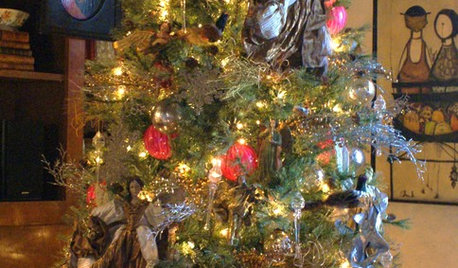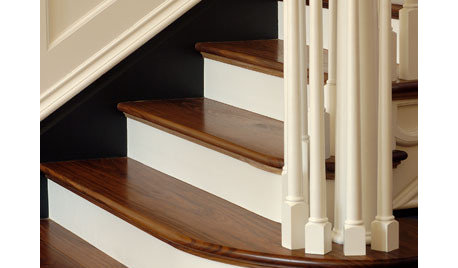Black Walnut tree
carol6ma_7ari
9 years ago
Related Stories

INSIDE HOUZZInside Houzz: A Walnut Wall of Storage Opens Up a Kitchen
A 30-foot wall of storage frees up cooking areas and counters for food prep and entertaining
Full Story
MATERIALSWoodipedia: Walnut Wows in Traditional and Modern Settings
With its rich color and lustrous polished finish, walnut is a favorite wood for all kinds of millwork
Full Story
GARDENING GUIDESPlant Black Cherry Trees for the Birds and Bees
Plant Prunus serotina in the Central and Eastern U.S. for spring flowers, interesting bark and beautiful fall color
Full Story
HOLIDAYSChristmas Tree Decorating the Painless Way
Holidays are for carols, not cussing. Make tree trimming less work and more fun with this guide at your side
Full Story
HOUZZ TOURSMy Houzz: Warm Walnut Rules in an Open-Concept Canadian Home
Traditional takes a turn for the modern in this remodeled St. John's home, newly focused on clean lines and sleek finishes
Full Story
FALL GARDENING11 Trees for Brilliant Fall Color
Give your landscape the quintessential look of autumn with the red, orange and yellow leaves of these standouts
Full Story
DECORATING GUIDESWhat Goes With Black Walls?
Once seen only in teenagers’ bedrooms, black these days is chic and showing up everywhere. Learn which colors are its perfect partners
Full Story
HOUZZ TVHouzz TV: A Most Unusual Indoor-Outdoor Connection
A giant California Sycamore grows through this dream house in the hills of Los Angeles
Full Story










fruitnut Z7 4500ft SW TX
drew51 SE MI Z5b/6a
Related Professionals
Parole Landscape Architects & Landscape Designers · Redondo Beach Landscape Architects & Landscape Designers · Alexandria Landscape Contractors · Manchester Landscape Contractors · Stamford Landscape Contractors · Surprise Landscape Contractors · Cockeysville Landscape Contractors · Darien Landscape Contractors · Hannibal Landscape Contractors · Lantana Landscape Contractors · Mendota Heights Landscape Contractors · North Chicago Landscape Contractors · Pine Hills Landscape Contractors · New Carrollton Landscape Contractors · Camp Springs Landscape Contractorscarol6ma_7ariOriginal Author
glib
calistoga_al ca 15 usda 9
lucky_p
RedSun (Zone 6, NJ)